Northern Virginia. When James Rebanks wrote The Shepherd’s Life, he captured a sense of belonging that many crave but few have experienced. His book explored the rhythms and traditions of sheep farming in a land where shepherds have worked and lived for thousands of years. At a time when many are chronicling the struggles and decline inherent in modern rural life, Rebanks’s story showcased the beauty and dignity of a provincial landscape and its people.
If his first book helped us to see and love the Lake District and its farmers, Rebanks’s new book—released in the U.K. in September 2020 as English Pastoral, releasing this week in the U.S. as Pastoral Song—seeks to lovingly critique it. He offers a very similar history of a place and its people, but digs underneath the surface to better understand farming methodologies that have sculpted it.
With his new book, I see Rebanks offering us a vision of place that counters the mechanistic, detached, and utilitarian ethic of our time. We’ve “instrumentalized” nature, to use Robert MacFarlane’s term in his book Landmarks. We have lost the intimate knowledge of place that encourages our hearts to love and care for it. Rebanks’s grandfather farmed very differently, and his methods are described throughout Pastoral Song—not because they were perfect, but because his methods were characterized by a respect for nature and wildlife, as well as by a sense of fidelity and limits. Much of that has been lost.
Rebanks argues for a re-enchantment of the farm in much the way MacFarlane describes it in his book Landmarks and Robin Wall Kimmerer does in her book Braiding Sweetgrass. He advocates for a loving, intimate relationship between humans and nature—one in which we stop our objectification of creation, instead seeking to truly see and love the places where we live. This is, in many ways, a book about intimacy and attention: about how everyday farmers and citizens can look anew at their places and notice both what they’ve lost and what they can steward.
In this Q&A, James Rebanks and I discuss his book, Wendell Berry, his vision for future farming methodologies, and the conversations surrounding agricultural reform in both the United States and the United Kingdom.
GO: In your first book, you explore the idea of being “hefted,” a word derived from Old Norse which means “to become accustomed and attached to an area of upland pasture.” It’s a term that traditionally applies to farm animals, particularly sheep, but in The Shepherd’s Life, you explore its potential applications to humans and consider your own attachment to the Lake District.
How has your understanding of heft shifted (or stayed the same) since writing that book? How does Pastoral Song refine or reshape your understanding of attachment to place?
JR: My first book was a very youthful and loyal book to my tribe. I was, and remain, very proud of our very rooted heritage and working culture. We have basically farmed the same landscape for at least six hundred years, alongside the same families, doing the same seasonal tasks, often as a community, and that makes for an interesting society with lots of virtues (just as other communities that are different to us have their own virtues).
My new book Pastoral Song is a more searching and honest reckoning with our impact on this landscape, and of our belief that we are good stewards of this place. I explore the flaws and blind spots in that self-identity as it reaches our own age after decades of technological and economic change. It is about a journey to a deeper understanding of the place and of us, and a more grown-up take on what we are, and what we need to be to care for this landscape in an age of climate change and biodiversity collapse. Pastoral Song is about four generations of my family, a small homely story about one farm, but it also has an epic quality because it becomes about how we all relate to the land now, and what we all need to be thinking about if we want families like mine to both feed us and care of the nature we need.
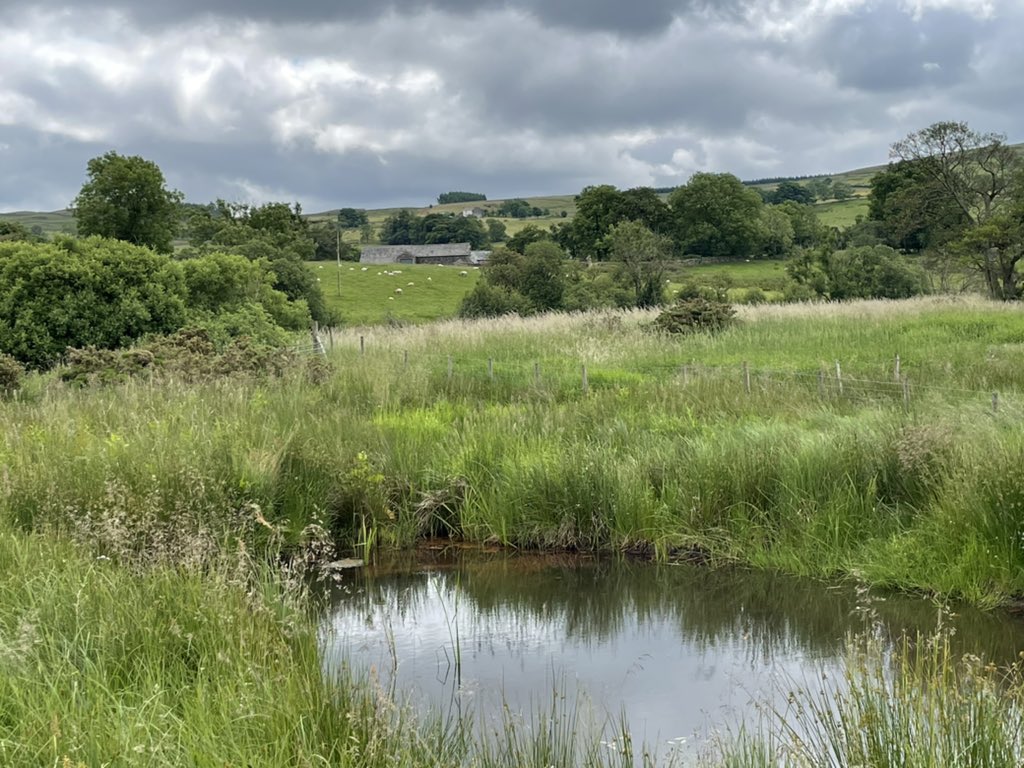
GO: A lot of readers at FPR (including me) are fans of Wendell Berry. When did you first encounter his work, and how has it inspired or shaped your own?
JR: I was just finishing my first book when I read Wendell Berry for the first time. He isn’t well known in the U.K. outside of food and farming literary circles, or wasn’t until the last five years or so. It was somewhat humbling to realise that someone had come to very similar conclusions to those I was reaching, but had reached and articulated those conclusions fifty or sixty years ago when it was far less clear what was happening. I have visited Wendell’s home and his community, and done an event together in Louisville Public Library. I respect him greatly and he has been a friend and champion of my work. And I’ve been able to repay that a little by my U.K. editor publishing his essays and his poetry.
Pastoral Song owes more of a debt to Wendell, and to other American rebel heroes of mine, like Rachel Carson and Jane Jacobs. It felt absurd that he interviewed me when we were on stage together, as he is the boss on this stuff, and I am a mere upstart. He made me laugh because he told me that he had about nine copies of my first book because his friends kept sending it to him saying “you will love this.” I can only doff my cap respectfully to him as the great agrarian radical that he is, and perhaps, as a younger writer with similar beliefs, pick up the torch and carry it forward as best I can.
GO: Wendell Berry writes a lot about health as conviviality, about health as connection, and this is a concept you unpack beautifully in your book. In your consideration of more industrialized, intensive farming rhythms, you share various instances and examples of fragmentation: there’s the growing fragmentation between farmers and their animals, as a more mechanistic and utilitarian approach to agriculture results in inhumane treatment and a complete lack of relationship. Fragmentation between farmers and the earth results in a loss of respect for or knowledge of life in the soil. You note how fragmentation is impacting farm communities, as well as the relationships between rural and urban communities. And then you consider, at length, the loss of relationship between farmers and wildlife. How do we restore these broken connections?
JR: We are too clever by half, solving problems in isolation. But then we are fooled by our cleverness, without having the real humility and wisdom we need to see things as complex wholes. We solve one problem and simply make another, or three. Applying industrial thinking and technologies to agriculture to the exclusion of other values and judgments has been an unmitigated disaster for our landscapes and communities.
Food is more than a commodity, farming more than an industry. It shapes the world, affecting everything from the health of our watercourses to deciding which animals, insects, and birds thrive and which do not, and it even shapes our own health. To have healthy food and farming systems we need a new culture of land stewardship, which for me would be the best of the old values and practices and a good chunk of new scientific thinking. We also probably need to be quite humble about our debt to traditional food systems and indigenous peoples who often knew the answers a long time ago, and have endured centuries of us treating them like idiots.
GO: How ought we to learn from (and model our efforts on) traditional farming methodologies? How and where do we need to adopt newer or different methods?
JR: We need to get many of the post-war chemical technologies out of agriculture. They deliver cheap and quick commodity wins, but with expensive and deadly external ecological costs that are never truly accounted for. To do this we do need to look at how people farmed before they became reliant upon those technologies, at how they maintained soil health, and used mixed cropping and livestock and cover crops to keep their land in good condition. They didn’t get everything right in the past, and we sure as hell don’t want to recreate some of the social structures or social attitudes of the past, so we need to think creatively about how best to utilise people fairly and decently in our food systems instead of exploiting and using them as modern agriculture tends to, particularly immigrant farm workers, because the way they are treated is often a disgrace.
GO: Yes—there’s much work and reform that needs to be done to address injustices in our food system. Many agricultural experts and writers in the U.S. (and elsewhere) are considering the racism and exploitation that have shaped (and continue to sustain) our food system, and what it will take to achieve true health. I’ve seen many call for a return to collaborative farming: replacing the U.S.’s predominant model—that of nuclear family farming—with one in which co-ownership of the land leads to more equitable pay, as well as more equitable sharing of the work and contribution of one’s individual talents and skills. This vision is modelled on historic farms like Fannie Lou Hamer’s Freedom Farm Cooperative, the model offered through indigenous agriculture, and the agricultural practices of religious communities like the Hutterites (among others).
In your book, you note how this model existed in the U.K. up until the Inclosure Acts. Have you also encountered a movement toward collaborative farming in the U.K.? As someone who grew up on a family farm, what are your thoughts on its practicability and implementation, both in your country and in the U.S.?
JR: This way of thinking isn’t as pronounced here as in the states. Mostly because the roots of agriculture aren’t the same as they are in the states. The powerless and exploited folk in our rural history were overwhelmingly white, and under feudal overlords. Family farms have always been seen here as a liberation from that aristocratic tyranny, a hard earned taking back of some control and land into the hands of ordinary working people. There are no indigenous people here other than us, and no one did the sweaty work except us (except some immigrant Irish workers). So we don’t have the same reasons to distrust the idea of the “family farm,” or see it as a nineteenth century bit of capitalist propaganda. Though I am sure some of the same social critiques can be made about farming here, it isn’t based on the same shaky foundations. I follow the American debates and can see why there is great skepticism about the way ‘family farm’ is used as propaganda for first clearing (killing and stealing the land from) the first indigenous people, then encouraging poor white people to flood in and try and farm it in unsustainable and often unviable European ways, and later using it to defend the concentration of land and wealth and power in rural America in to too few hands under a kind of myth of rural nostalgia, when the reality is often pretty shabby.
The farming landscape I work in has remnants of a collaborative model—we graze common land alongside ten other flocks of sheep, and gather the mountains as a community. Two hundred years ago our greatest agrarian radical William Wordsworth called it a “perfect republic of shepherds.” It isn’t perfect, of course, and we have a bit of soul searching to do as well, but nor is it simply a carbon copy of modern rural America. We have different barriers to create a viable and decent future, and to meet our ecological and economic challenges, and perhaps some of the answers are more collaborative. On our own farm I am more and more convinced that collaboration is the way forwards, the old male macho farmer myth is something I try to dismantle in my book—good farms always took a village of people to make them work, and here a lot of the farm work and farm management was always done by tough and smart women.
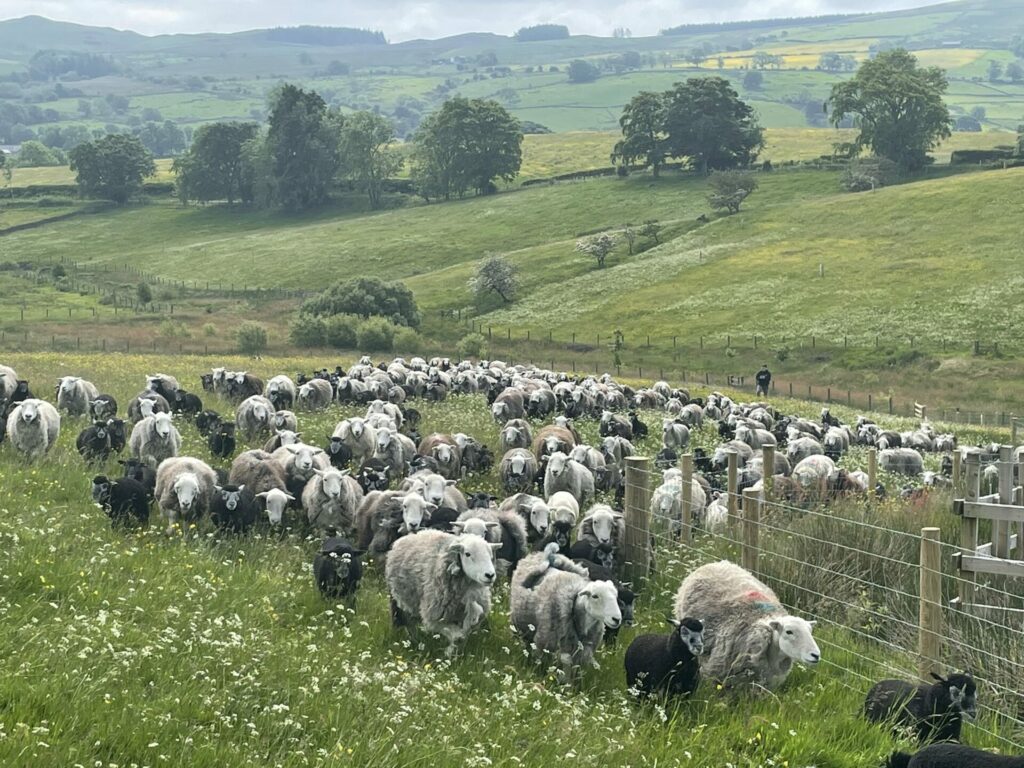
GO: You chronicle at length the work you’ve done (and intend to do) rewilding your land. How do you think others, including those in the United States, could follow suit? What are some of the primary lessons you’ve learned in this endeavor?
JR: You can’t help nature, or fit in to it with less damage, unless you wrap your head around what nature is trying to do on your land. And to do this you have to do a little bit of ecological homework to understand how it functioned before humans changed it—what was it? What flora and fauna thrives in it? What role did the different animals and plants play in it? What did those species need in terms of habitats and processes?
On our farm, the answer is that it was largely a kind of wooded Savannah shaped by large herbivores—a swirling dance of woodland, thorny and willowy scrub, and native grassland clearings, with wetlands shaped and maintained by beavers. I can’t rebuild all of that, but I can create a patchwork of habitats that mimic it in part, woodland and wetland and scrub, and meadows that mimic woodland clearings, and I can plan and time grazing of my cattle and sheep to allow the wild flowers to do their thing. Mostly we have learnt that when we mimic the habitats and processes of the past nature thrives here, and it is way easier than fighting nature.
GO: What does the local food movement mean to you? What do you think are some of its biggest strengths and weaknesses?
JR: There is no mending of farming without creating effective local food infrastructure. Too often this has been lost and often no one is sure how to get it back. Farmers markets are a good thing, but often only provide a solution for a small number of farmers and for niche things. I believe that if we are to get out of the terrible food system we have created that makes us fat and sick through eating processed rubbish, then we need to recreate healthier real food systems that are for everyone.
That might mean amazing urban farms in the poorest neighbourhoods, or supermarkets really supporting local farmers, or any number of other approaches, or collective farms that utilise people and their skills in new ways. The worst weakness is that our whole culture is corrupted about food, with us being told repeatedly that food should be really cheap and is little more than fuel. It isn’t. Good food and good eating should be at the heart of our culture, and taking part in food production should be seen as vital and important work—a supreme form of caring and love.
GO: You draw on the example of Jane Jacobs in your book—how and why is she an inspiration to you? How do her ideas surrounding healthy cities apply to healthy farms, and healthy rural land?
JR: Yes, Jane Jacobs is a hero to me. America led the way to the post-war consumer utopia but it also got the first great wave of rebels that questioned it all. One of the greatest of these is Jane Jacobs. She basically realised that the big bold modernist thinking hadn’t really been thought through properly. It created places that were less good to live in for real people. She began to think about cities as they actually exist as lived in places, and what people want and need from them. She realised that great urban spaces are mixed-use, and a mix of old and new buildings, and that they need to be designed to work for people. The planners of the day were lost in their own power, and their own paradigm, and dismissed her. But she was way more right than wrong.
The parallel with farming is very clear—the post-war narrative of progress simply ignored all the inconvenient facts, turning the ecological impact of industrialised agriculture into a mere “externality,” and ignored the fact that the most efficient farming was actually a complete disaster for ecosystems. We need farming and food systems that work for humans and nature, and it requires to look at these things again.
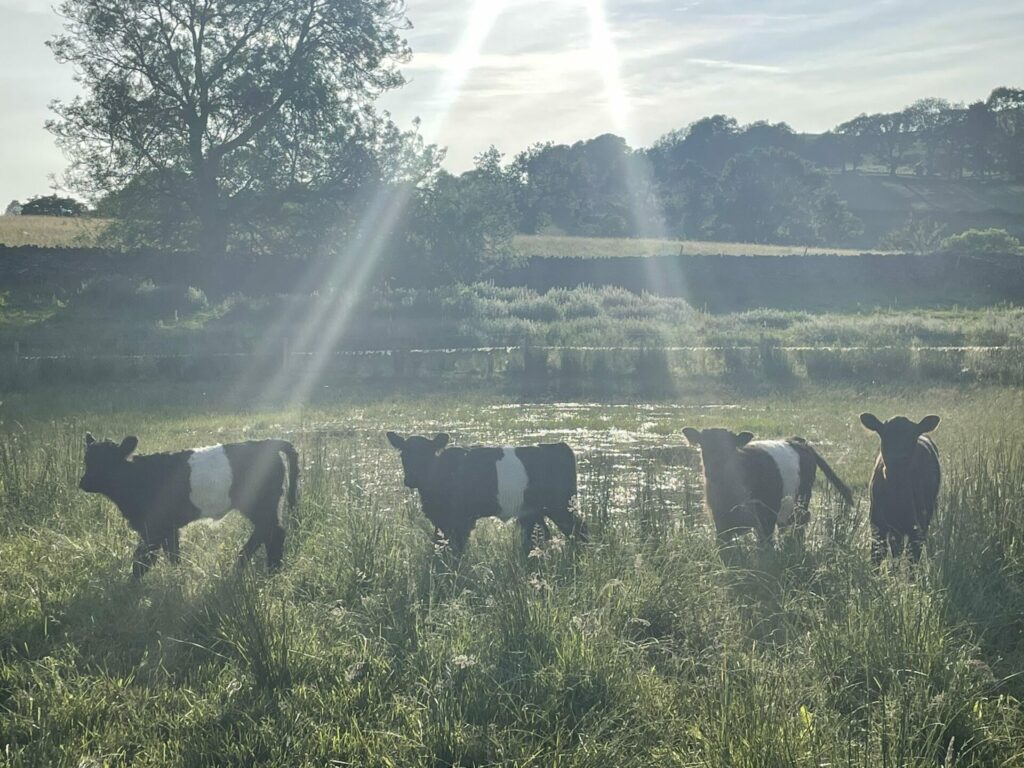
GO: In your travels to the U.S., and interactions with farmers in the states, what have you observed about the state of agriculture in our country? What are some primary lessons U.S. farmers could learn from your book—and what should U.S. consumers consider as they read Pastoral Song?
JR: North America has some of the worst and some of the best farming on the planet. The worst is there for all to see, a system that is bizarrely subsidised or insured to trash soil, destroy biodiversity, poison groundwater, erode soil, create run off that makes giant dead zones in the Gulf of Mexico, and which creates landscapes of more or less monoculture soy and corn, with a scattering of pig or chicken CAFOs, and elsewhere giant cattle feeding yards. It treats farm workers badly, paying them poor wages to do all the work, and concentrates land and wealth in fewer and fewer hands as a tax dodge. And it has led to a strange death of rural communities because the only folks making good money from it are giant corporations selling machinery, insurance, fossil fuel chemical inputs and debt. It also produces awful food that is killing Americans by making them obese and reliant upon processed foods that is a public health disaster.
Until about the 1970s you could persuade yourself that this was the ‘best farming in the world’ based purely on the efficiency per farm worker or the acreage per farmer, or the cheap corn, soy and meat that came out of it. Since then it’s become obvious to anyone sensible that it is only “good” if you ignore all its effects. The best farmers in America are folk leading the “regenerative” shift away from this model. This shift tends to come in two forms: white middle-aged guys who for a range of reasons are celebrated for rebelling against the status quo—men like Gabe Brown, Joel Salatin, and Greg Judy—but it is worth noting that often their practices of mixed cropping, and incorporating animals in the mix, are borrowed from nature or from traditional practices from indigenous or native peoples.
We have learnt that a good chunk of the answers lie in the past, in techniques that predate the fossil fuel inputs—but change is also coming from new science about soil or maximising photosynthesis through planned grazing or using cover crops and restoring native habitats and ecosystem processes.
U.S. consumers need to think about how they can support local food systems that are sustainable and sympathetic to their local ecosystems. And Americans need to think about how they vote, and where power lies, as both American political parties are currently bought off by lobbyists from Big Ag and Big Pharma to keep these ruinous systems going. Why? Because the status quo works just great for a handful of giant corporations who own the food and farming system.
Photo credit: James Rebanks on his farm with his sheep.

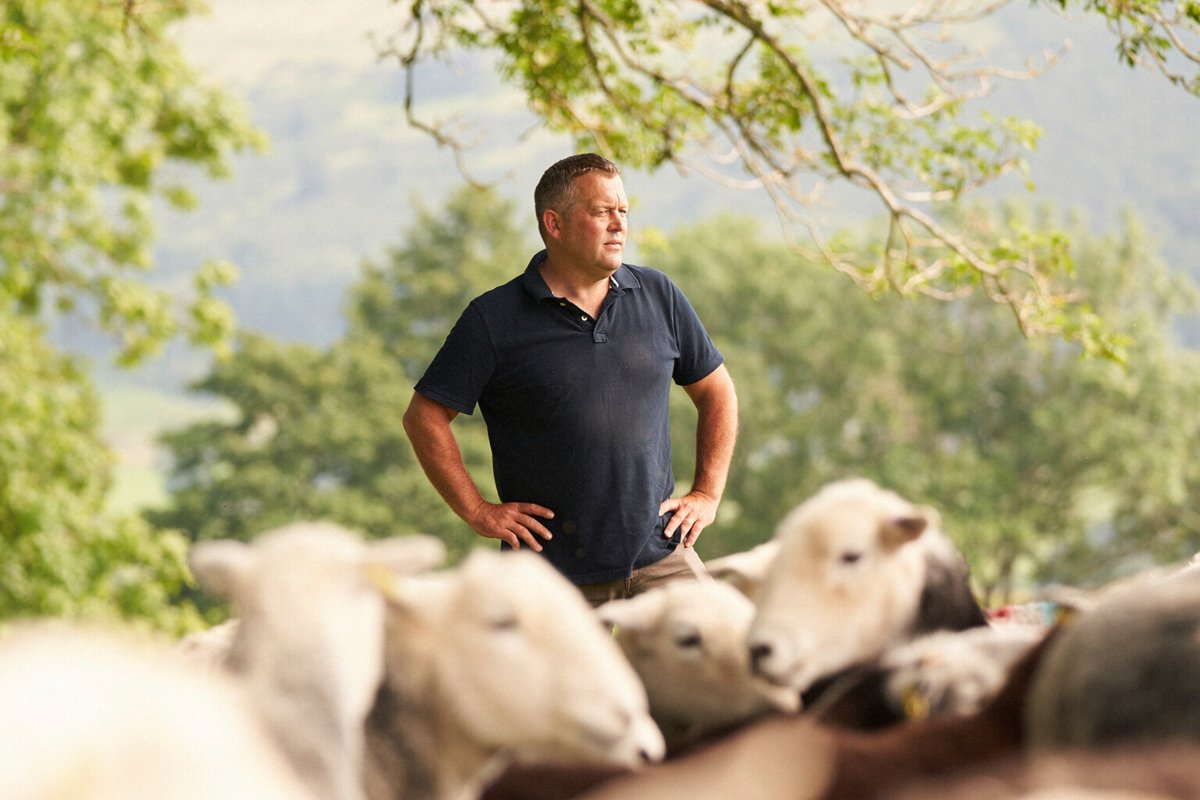

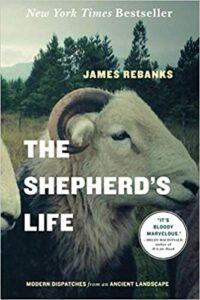
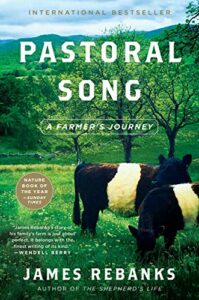




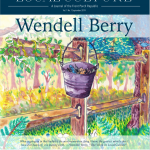
3 comments
Rob G
Great interview, and very glad to see this fine book getting attention in the U.S. I read it when it first came out last year and I think it’s one of the better “agrarian” books to have come out in a good while. As you point out, there are differences between the US and UK agricultural stories, but the broad narratives, especially those of the 20th century, run parallel.
An excellent companion piece to Rebanks’s book is the recently published Woodston: The Biography of an English Farm, by John Lewis-Stempel, in which the author traces the story of the land/region on which his farm sits from prehistory to the current day. Like Rebanks Lewis-Stempel is not well-known in the U.S. except perhaps in nature writing circles, but his books are well worth seeking out. A few years back I wrote about one of them here:
https://kirkcenter.org/reviews/four-acres-in-herefordshire/
The other English rural writer that Americans should not miss is Ronald Blythe, who turns 99 (!) this November. From his classic Akenfield (1969) through his many diaristic books about his life as a rural English lay minister and man of letters, Blythe has documented the changes in rural life in a heartfelt but unsentimental way, one that makes for a very peaceable, enlightening read. I once told a friend that reading Berry helps keep me honest, and reading Blythe helps keep me sane.
Brian D Miller
Rob,
Thanks for the heads up on Lewis-Stempel’s new work (loved both Meadowland and Running Hare). And I’ll have to give Blythe a try.
Cheers,
Brian
Brian
His comment about the disgraceful way that immigrant farm workers are treated would have been interesting to delve into, because the issues around that in England I would guess are very very different than here in the USA–my impression is they have tons of seasonal migrants like we do, but far fewer illegal workers, though I could be wrong about that. His response to your very US-centric (actually, US-wealthy-liberal-centric) question about that was amusing.
“both American political parties are currently bought off by lobbyists from Big Ag and Big Pharma to keep these ruinous systems going”
Tut-tut, doesn’t he know that Big Pharma is totally beyond questioning right now? They love us and wish to help us, always have and always will…
Comments are closed.